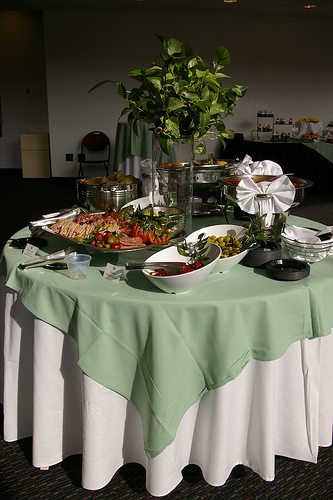The menu is the most important foundation and attraction of a restaurant. It presents the different dishes served by an eatery, catering or food delivery establishment.

The following are some practical guides in planning your menu for your catering business:
1. Know what specialty foods you can cook that your customers will like. For example, if you are excellent in cooking kare-kare, make this the specialty of your restaurant. Just be sure that you have other dishes that complement the kare-kare like grilled meat, pancit, viand with broth, fruits and dessert like kalamay.
2. Plan the menu according to your target customer. For example, students prefer beef, pork and chicken to fish and vegetables. Manual laborers often ask for more rice and any viand with sauce. This is because they want more filling food that is cheaper. On the other hand, children prefer spaghetti, hotdog, hamburger and fried chicken.
3. You may use as basis, the cost of food and the expected profit in planning the food to be served. Use extenders like potatoes, tofu, veggie-meat and other vegetables to lower the cost of the meal.
4. Make sure that the ingredients are on-season to be able to serve foods that are cheaper but higher in profit. For example, if bangus is cheap, you may include in your menu different special dishes from bangus like relleno, sinigang na tiyan ng bangus and sarsiyadong bangus. Put a sign or poster outside your restaurant advertising your special menu.
5. Make sure that you can serve the foods that are in your menu. Also, make sure that you have the needed equipment. For example, you need a grill if you have barbeque or inihaw in your menu.
6. Use your imagination and creativity in preparing your menu even if these are simple, so as to make the food attractive to the customers. For example, a pancake may be ordinary but it becomes special when you put different flavors and garnishing. An ordinary galunggong will become special if served in banana leaf with side dishes like atsara or vegetable salad.
7. Match the menu to the weather. On cold days, it is best to include in the menu foods rich in energy like beef, pork, chicken, pasta and kakanin. Also include delicious food with broth like arroz caldo, nilaga and chicken soup. On hot days, prepare refreshing foods like halo-halo, mais con yelo, sago’t gulaman, ice cream and different salads.
8. Give importance to the health and nutrition aspects in planning the menu. Avoid serving oily foods. Balance the foods and know the right combination to make sure that the foods served have enough vitamins.
9. For breakfast, prepare simple and easy-to-cook foods like tapsilog (tapa-sinangag-itlog), longsilog (longanisa-sinangag-itlog) and tosilog (tosino-longanisa-itlog).
10. Consider the space of your kitchen and cooking area. If your kitchen space is small, serve food that can be cooked early so that these can be just heated when ordered. Consider using a microwave oven because this type of oven does not alter the taste, volume and texture of the food being heated.
source: trc.dost.gov.ph
